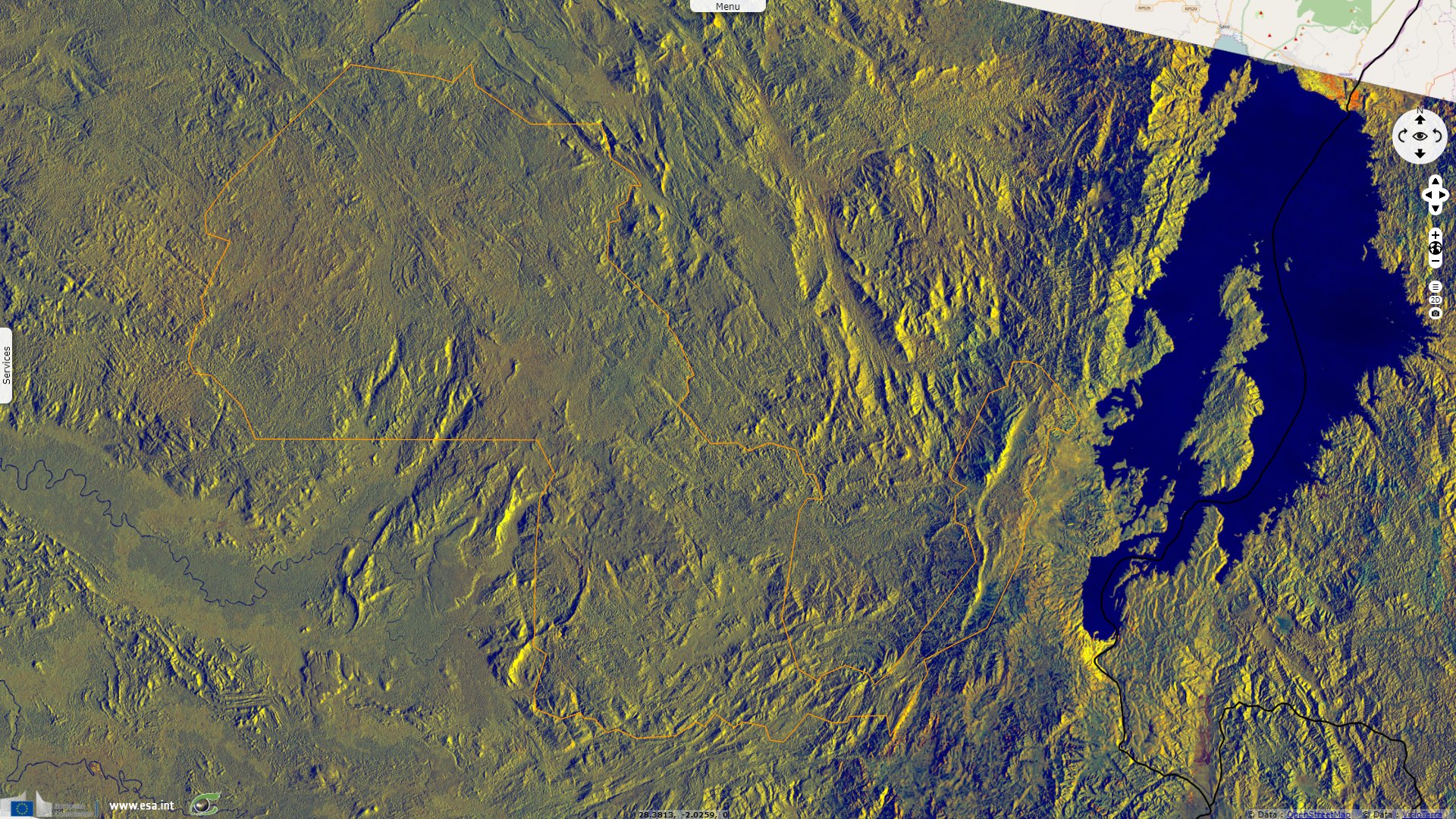Imperiled World Heritage in Kahuzi Biega Park, DRC
Landsat TM acquired on 26 May 1984 from 07:41:46 to 07:42:10 UTC
...
Sentinel-2 MSI acquired on 05 April 2022 at 08:16:01 UTC
Sentinel-1 CSAR IW acquired on 21 April 2022 at 03:53:38 UTC
...
Sentinel-2 MSI acquired on 05 April 2022 at 08:16:01 UTC
Sentinel-1 CSAR IW acquired on 21 April 2022 at 03:53:38 UTC
Keyword(s): Land, natural resources, rainforest, deforestation, urban growth, agriculture, poaching, tourism, National Park, UNESCO World Heritage, biodiversity, DRC, Congo
In eastern DRC near Lake Kivu, the Kahuzi Biega Park was inscribed on the World Heritage List in 1980. In 1997, it was placed on the list of World Heritage in Danger. In 2005, the mountain gorilla population was estimated to be down to about 100 individuals, a sharp reduction from 600 gorillas in the pre-1990 conflict period.
6000 km² in size, the park is the object of much greed. Its biodiversity is subject to traditional hunting but also poachers. Its mining resources (such as gold or coltan) and valuable wood also cause illegal exploitation. The observed urban growth causes anthropic pressure on natural resources while the deforestation at the margin of the park is likely caused by farmers extending their land on the forest.
But for its authorities, it also brings hope for more durable resources. It is generating durable production of non-timber forest products. It is also the source of water for the city of Bukavu, 500 000 inhabitants including its suburb. A water supply project is being financed by French Development Agency.
The park's swamps, bogs, marshland and riparian forests on hydromorphic ground at all altitudes are rare worldwide. 136 species of mammals have been identified, over 1178 plant species have been observed in the highland regions of the park alone. This allows the ecotourism sector to be an important contributor to the local population.







